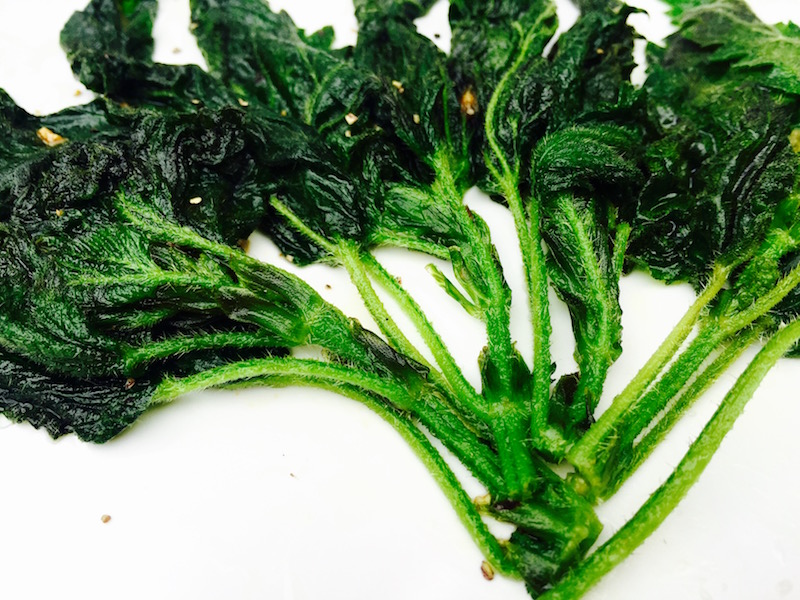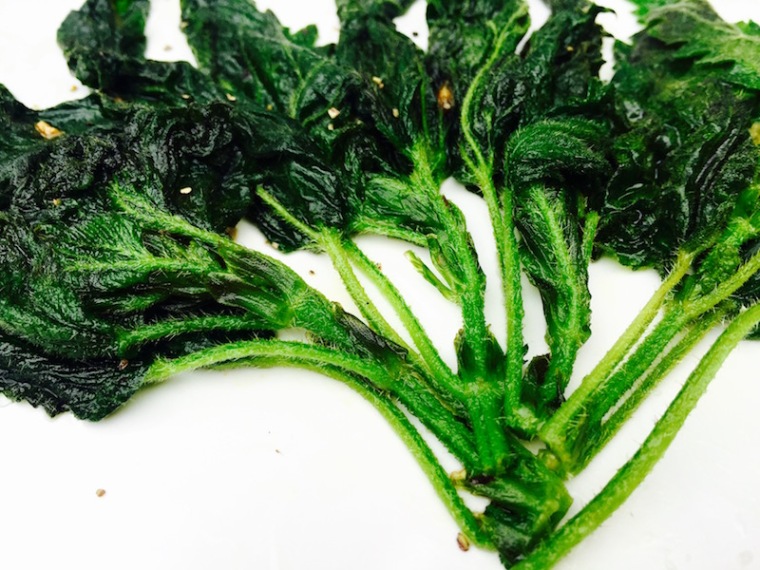
Dr Suhas, that great luminary of Ayurvedic healing, reminds us that eating our greens can be the best medicine, but he adds that greens should always be prepared with two things: garlic and lemon.
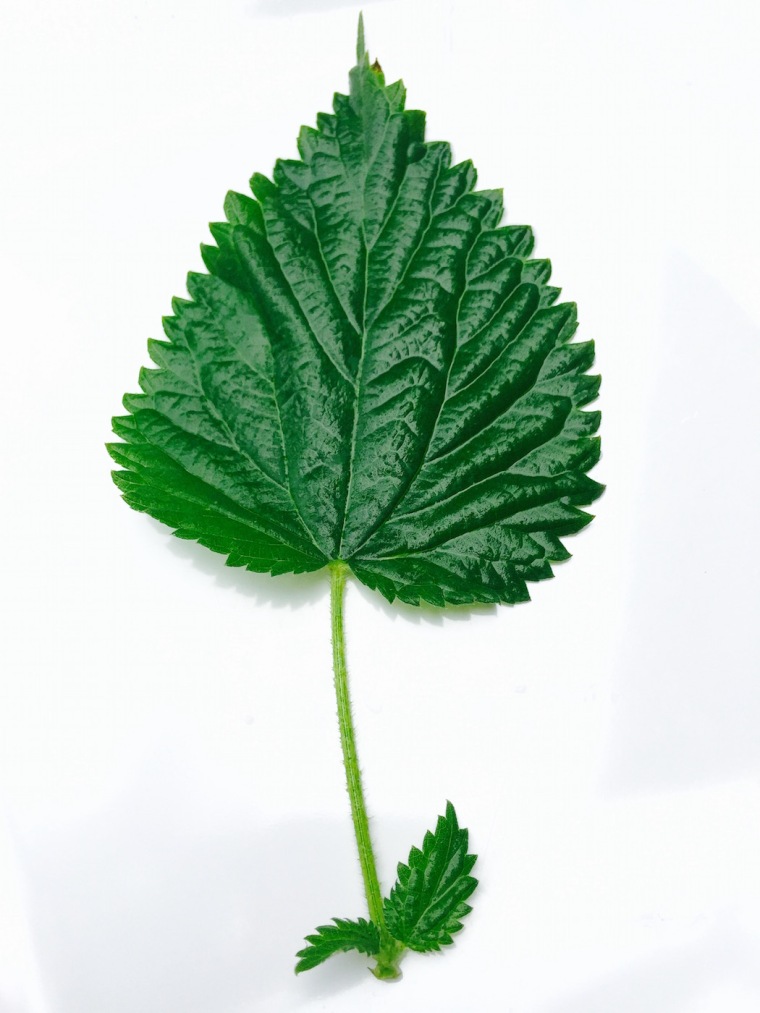
Yes, nature’s medicine can be delicious.
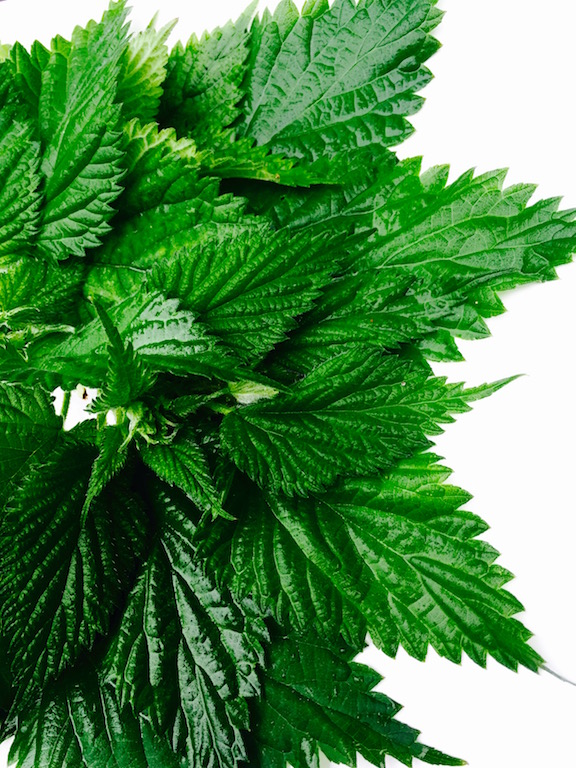
Thinking of all the lemony, garlicky greens we find in Italian, French, Greek, Chinese, African and just about every “heritage” cuisine, I am reminded again of how intuitively Ayurvedic wisdom is alive in every culture that grew up from a deep relationship with the land.
One of those classic heritage dishes is this lemony-garlicky sauté of nettles – simple, delicious, and medicinal.
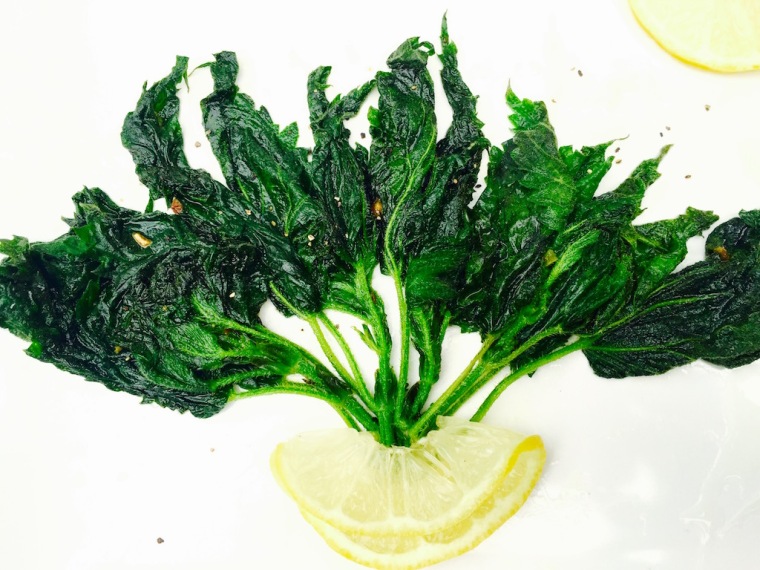
Why nettles? One thing wisdom elders and grandmothers knew was that the nettles growing wild in spring are delicious, potent medicine for so many of our spring concerns. As an astringent, diuretic, anthelmintic, antihistamine, decongestant, and detoxifier, nettles help your body manage the Kapha tendency of spring, especially sinus congestion, allergies, asthma.
Nettles are so good for you that my friend, the great medicine woman Shannon Thompson, recently said, “It’s easier to list the few thing nettles don’t help.”

Where? Nettles grow abundantly in wooded areas, by river beds, and around abandoned buildings… but if you can’t find them in your neighborhood, Traditional Medicinals makes a fine nettle tea and Frontier sells the leaves and roots in bulk. (I do not have an affiliate relationship with these companies. I do appreciate their integrity and products, and I want to help you access this natural medicine as best you can.)
Be sure to wear gloves when working with nettles. Once they are cooked, they are tender and harmless, but until then, they can really sting. And sting with a lasting vengeance. If that happens, put your hands in ice water. Then wash with soap. Use tape to extract the nettle thorns (which can be invisible). Apply a thick paste of baking soda (mixed with scant water) and allow to dry before washing off. Finally, eat your cooked nettles for the antihistamine.
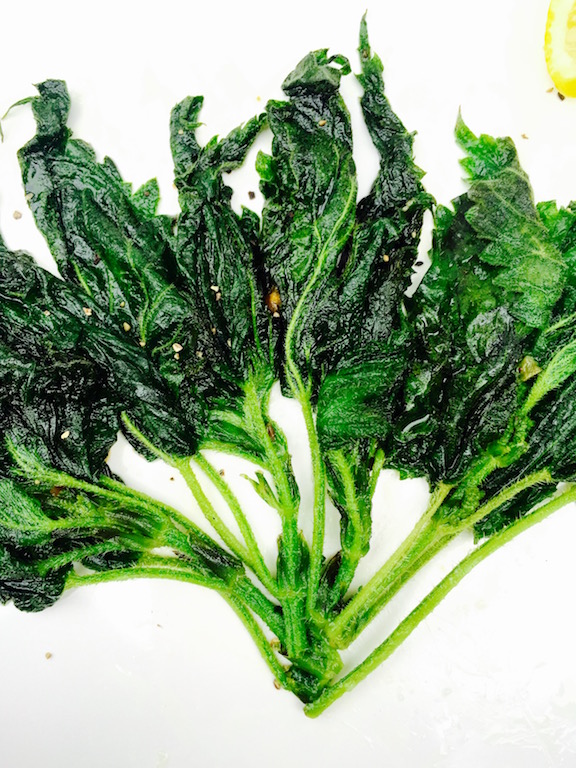
Sautéed Nettles with Chewy Crunchy Garlic
Serves 2
a double handful of nettles, rinsed
2 cloves garlic, minced
1 T ghee or refined coconut oil
1/2 lemon
pink salt & freshly cracked black pepper to taste
optional: extra virgin olive oil, red pepper flakes
Melt ghee or coconut oil in a sauce pan over medium heat. Stir in the garlic, and sauté for a few minutes, swirling the pan now and then to distribute the heat. As soon as the garlic begins to getting golden, add the nettles. Cook a minute or two, stir and gently turn. Cook another minute or two and remove from heat once the leaves begin to lightly brown.
Squeeze a generous amount of lemon juice over the nettles, then season with black pepper and pink salt to taste (it shouldn’t need much salt thanks to the lemon). As you serve the nettles, you may optionally drizzle with olive oil, or sprinkle with red pepper flakes.
Another option to boost the health benefits is to stir a scant teaspoon of turmeric powder in with the sautéing garlic just before adding the nettles.

I mentioned Dr. Suhas. He and is wife, Dr. Manisha, are two of my great mentors. I offered Dr. Manisha’s book Eternal Beauty in this post, and offer you now Dr. Suhas’ new book, The Art and Science of Vedic Counseling, co-written with another of my longtime mentors and friend Dr. David Frawley.
“The Art and Science of Vedic Counseling” is the best counseling guide available for students, teachers, and practitioners of Ayurveda, Yoga, and related healing arts. The book is an ever-cherished collection of knowledge, wisdom and a practical, clinical reference. I highly recommend the book to all who love Yoga & Ayurveda.”
~ Vasant Lad, Ayurvedic Physician
If you would like to be entered to receive this book, please leave a comment below.
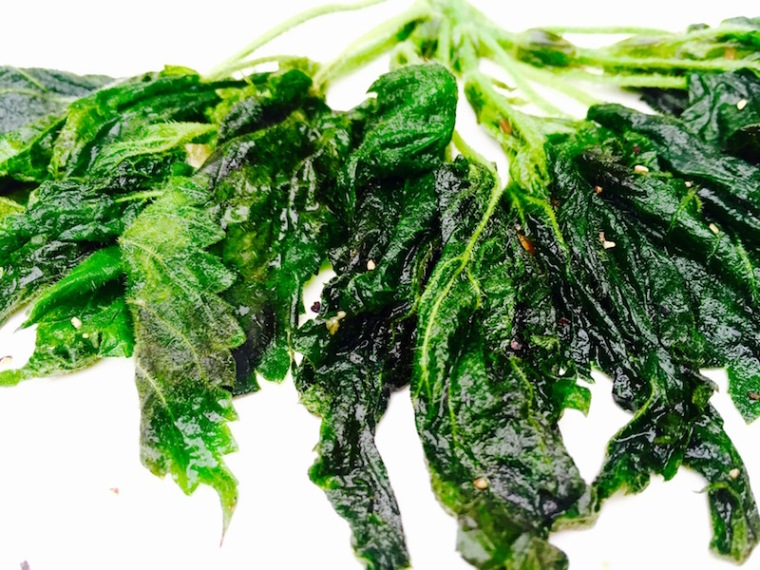
Do you suffer from spring allergies? If so, I highly recommend a daily dose of nettles – along with this great article from Banyan Botanicals on Ayurveda’s approach to allergies.
Do you have a favorite nettle recipe? Do you have memories of a grandmother harvesting greens in spring? How do you keep the traditions of nature’s medicine alive in your life, your family, our world? I would love to hear. Thank you & Namaste!
Do you have a favorite nettle recipe? Do you have memories of a grandmother harvesting greens in spring? How do you keep the traditions of nature’s medicine alive in your life, your family, our world? I would love to hear. Thank you & Namaste!
